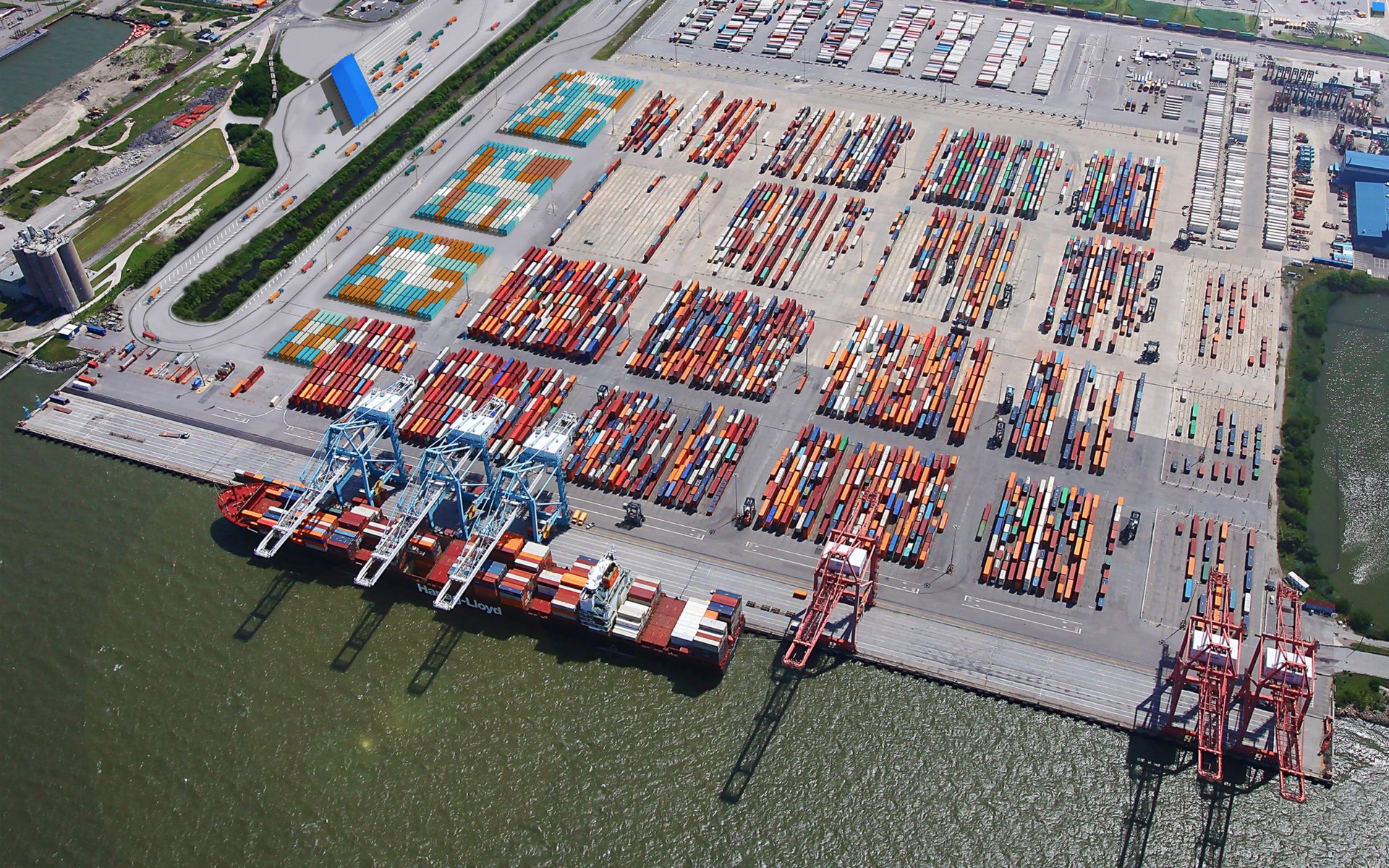Recognizing the need for improvements to the North Gate Complex at the Norfolk International Terminal (NIT), the Virginia Port Authority turned to Clark Nexsen’s civil engineers to deliver state-of-the-art design that supports future growth. These improvements are part of the North Gate complex, which consists of an automated truck gate, heavy-duty paving, and five new buildings including a 16-lane inbound canopy, a 10-lane outbound canopy, Inbound and Outbound OCR (optical character recognition) portals, and a driver assistance facility.
The truck gate facilities directly connect NIT to the proposed I-564 intermodal connector, a separate road construction project adjacent to NIT, which allows containerized import/export cargo loaded on trucks to directly access the Interstate Highway System. The buildings include state-of-the-art scanning capabilities, weigh-in-motion and stationary truck scales, and automated signs, within a complex of approximately 22 acres. These enhancements support accessibility and efficiency for both the Port Authority and the logistics companies who utilize the highway, ultimately supporting economic opportunity.
Improving personnel safety within the complex was also an important consideration. To achieve this, a new personally-owned vehicle gate has been designed, consisting of a canopy and a booth for security, eliminating the need to mix container truck traffic with personally-owned vehicle traffic at the truck entrance. With the expansion of the North Container Yard covering roughly 8 acres, our team accounted for significant truck traffic and stacked containers by designing a steel sheet pile retaining wall approximately 1,300 feet long.
Supporting design services included extensive erosion and sediment control, stormwater management, demolition, grading, storm drainage, multiple pavement types, signage, pavement markings, site utilities, and electrical improvements including new high-mast lighting, power and communications.
Our team’s transdisciplinary expertise in civil, structural, and transportation engineering supported the creation of an efficient design that supports the goals of the Virginia Port Authority for this facility.

